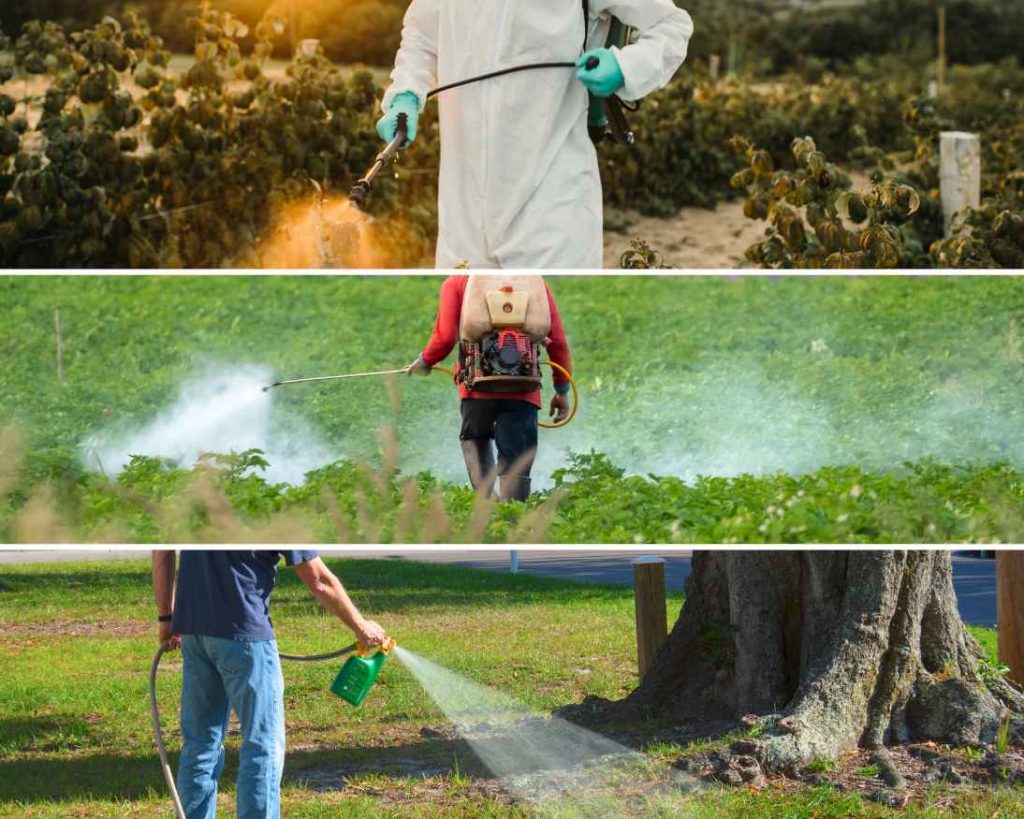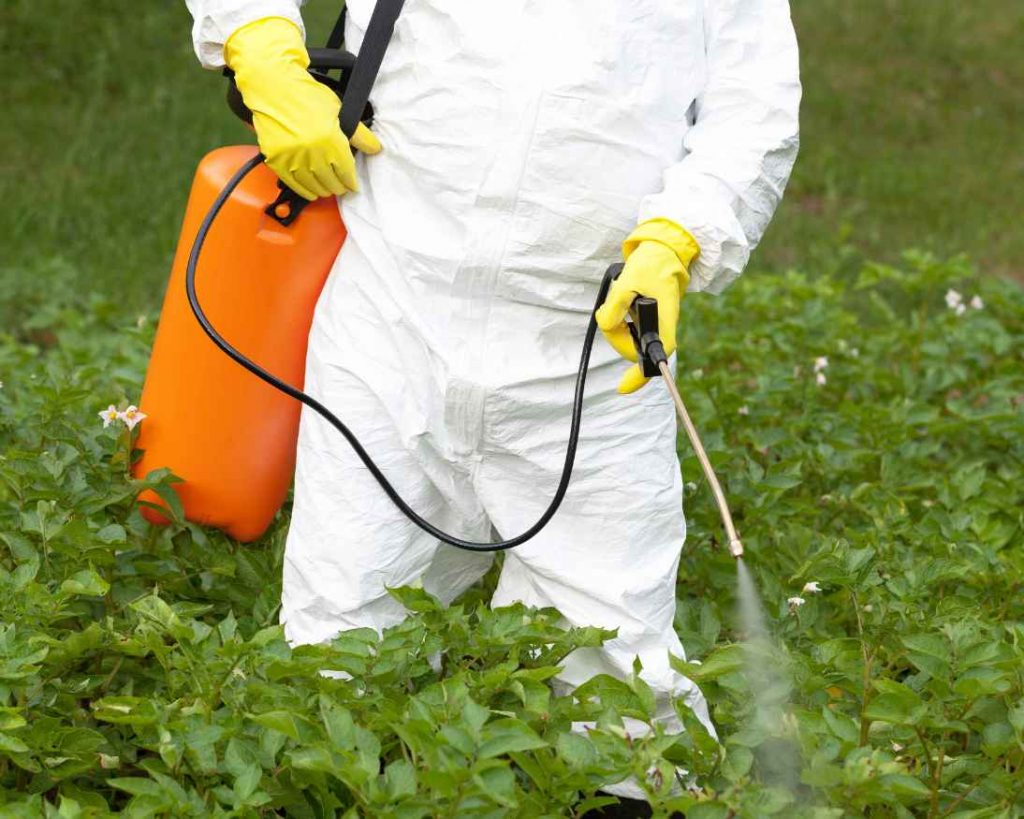The Top Hidden Costs of Chemical Weed Control or Toxic Weed control
Table of contents
Off-Target Damage
Introduction.
Impact on Non-Target Vegetation.
Drift and Overspray.
Consequences for Landscapes and Weed Establishment.
Tarnished Public Image
Historical Perception of Glyphosate
Controversies and Health Concerns
Reputational Challenges for Cities and Organizations
Disconnect from Environmental Sustainability Goals
Herbicide Resistance
Adaptation of Weeds
Development of Herbicide-Resistant Weed Populations
Escalation in the Arms Race
Global Examples of Glyphosate Resistance
Public Safety
Concerns in Public Spaces
Residual Toxins and Vulnerability of Children
Increased Administrative and Resource Management Costs
Administrative Efforts
Permitting and Safety Regulations
Disruption to Public Access
Increased Employee Occupational Health and Safety (OH&S) Risk
Risks Faced by Herbicide Applicators
Exposure to Chemicals and Health Implications
Storm and Potable Water Contamination
Residual Half-Life of Herbicides
Rainfall Events and Contamination
Concerns About Potable Water Sources
Habitats, Ecosystem Services, and Threat to Pets and Wildlife
Unintended Consequences on Urban Ecosystems
Harm to Beneficial Insects and Biodiversity
Risks to Pets and Wildlife
Chemical Weed Killer-Based Litigations
Global Shift Towards Non-Chemical Management
Insurance Considerations and Litigations
Examples of Roundup Cancer Lawsuits
Across the fabric of our designed and managed open spaces, in the disturbed sites, neglected corners, and the interface with natural environments, nature weaves its awe-inspiring tapestry. It is a testament to nature’s resilience and adaptability—the way it seizes every opportunity, even in the harshest conditions, using voids as blank canvases, to paint its masterpiece. Here, in the face of urbanisation’s ceaseless march, opportunistic vegetation emerges, breathing life into forgotten spaces, and heralding the return of diversity and vitality.
Not all forms of opportunistic vegetation are desirable so narrative emerges—one that paints these persistent plants as adversaries in a perpetual war on weeds. This narrative, grounded in a desire for order and aesthetics, preservation of assets, safety and maintaining biodiversity has driven us to seek control. For centuries labour and mechanical removal was the conventional mode of weed removal action, but only since the 1970’s(Chemical weed control in the seventies) has the “conventional” become chemical means. As we delve deeper into this story, we uncover hidden costs that challenge the wisdom of our recent approach.
The Nature of Weeds
Before we dive into the hidden costs of chemical weed control, let’s take a moment to understand the nature of weeds themselves. Weeds are nature’s opportunists, thriving in environments where they find a niche. They are the pioneering plants that colonise disturbed areas, abandoned lots, pavement cracks, and the gaps between pavers and cobblestones. They are not evil adversaries but rather nature’s response to the gaps that appear in the landscape that can support plant life. They are the first stage in nature’s succession to regenerate complex environmental systems.
This unwanted vegetation does need to be managed, for a whole range of valid reasons we will cover in another blog. It’s the current conventional approach that is questionable.
The Conventional Weed Control Approach
For decades, our response to this resilient vegetation has been the use of herbicides, particularly glyphosate-based products like Roundup. The convenience and effectiveness of chemical weed control have made it a widely adopted practice in urban areas worldwide. In fact glyphosate is still the most used chemical in the world. The narrative is simple: we are at war with weeds, and chemicals are the weapons of choice. But as the years pass and knowledge of the collateral damage emerges, questions arise about the true costs of this battle.
Hidden Costs of chemical weed control in USA, Australia, Canada and Newzealand Unveiled
1.Off-Target Damage:
Herbicides, while effective at controlling weeds, do not discriminate between target plants and unintended ones. The overspray or drift of chemicals leads to damage to non-target vegetation. This is often evident in newly established mass planted landscapes where non selective glyphosate herbicides are used to control emerging weeds. Here are the top 10 classic herbicides. Even a light breeze during application causes spray drift onto non-target plants, resulting in death, increased open space between plants and more area for weeds to establish. The off target damage (department of primary industry, 2022) may also be to habitats and ecosystem, covered in later points.
2.Tarnished Public Image:
The public’s perception of chemical weed control has shifted over the years. Glyphosate, once believed to be safe enough to drink, has become the subject of controversy. Reports of glyphosate residues in human urine, breast milk, and its probable carcinogenicity and being an endocrine disruptor raise valid public concerns. Cities and organisations using herbicides face costly reputational challenges, as they are associated with and have to manage their defence of using potentially harmful substances. It’s a disconnect from policy when they are also promoting environmental sustainability, best practice safety and least toxic weed management.
3.Herbicide Resistance:
Weeds, like any living organisms, adapt to survive. Over time, the repeated use of herbicides leads to the development of herbicide-resistant weed populations. This necessitates the use of stronger, more potent herbicides or the mixing of chemicals, escalating the arms race in the war on weeds. Australia and the US can boast the most glyphosate resistant weed species, due to the routine continual application of glyphosate over many decades. The costs of chemical weed control are increasing and the efficacy is decreasing. No one is factoring in the cost on health and ecosystems.
4.Public Safety:
The use of herbicides in public spaces raises concerns about public safety. Playgrounds, parks, and recreational areas treated with chemicals become a source of worry for parents and communities. The worry is genuine because toxins have residual life on surfaces, and the children who frequent those parks are the most vulnerable to exposure.

Glyphosate, an herbicide used in products like Roundup, was classified by the IARC as probably carcinogenic to humans in 2015.
5.Increased Administrative and Resource Management Costs:
Managing chemical weed control programs requires significant administrative efforts. Obtaining permits, adhering to safety regulations, and overseeing herbicide applications add layers of complexity and costs to weed management.The need to notify communities prior to spraying, and adequately sign post and cordon off areas during and after herbicide application disrupts public access and activities and add to the weed management costs.
6.Increased Employee Occupational Health and Safety (OH&S) Risk:
Those responsible for herbicide application face occupational health and safety risks. Exposure to chemicals, improper handling, and inadequate protective measures put employees at risk. Following labelled instructions means using respirators, spray suits, gauntlet gloves but rarely implemented in the urban landscape setting as it is seen as alarmist and overcautious. Non Hodgkin’s Lymphoma is the most common cancer of spray operators who have had repeated exposure over many years.
7.Storm and Potable Water Contamination:
Herbicides have a residual half life. Glyphosate for example has a half life of about a month. French studies have shown that just 5mm of rain can remove up to 30% of the Roundup sprayed on hard surfaces like paving. So rainfall events often wash herbicides from treated surfaces into stormwater systems, contaminating waterways and potentially impacting aquatic ecosystems. Concerns also arise about the presence of herbicide residues in potable water sources. With this knowledge is it therefore an EPA offence for glyphosate to be sprayed on hard surfaces within 30 days of rain?
Habitats, Ecosystem services, and Threat to Pets and Wildlife: Herbicides, even when used as intended, have unintended consequences on urban ecosystems. They have been shown to harm beneficial insects, disrupt soil microbiota, and impact local biodiversity. Pets and wildlife that come into contact with treated areas face risks of exposure.
8.Chemical weed killer based litigations:
With all these known risks and hidden costs, jurisdictions across the world are moving away from chemical weed management in a phased approach towards non chemical and natural vegetation management. Insurers are aware of current litigations against manufacturers and employers and addressing their risk with higher premium or declining to cover herbicide application. Cities and municipalities must consider the hidden cost of litigation as a result of their decision to continue with “conventional” chemical weed management. For example Roundup Cancer Lawsuits
There is no silver bullet when it comes to weed management. At Weedtechnics we work with hundreds of organisations, companies and individuals who are managing weeds without herbicides and avoiding the hidden costs of chemical weed control.
Jeremy Winer has 30 years of practical experience in implementing integrated holistic approach to organic weed management across urban landscapes, recreational parklands and wetlands. He currently runs Weedtechnics specialising in providing chemical reduction and non-toxic weed control programs to municipalities across Australia. He has developed, patented, manufactured, and commercialised the Steamwand method of creating saturated steam for vegetation control.
Labels
- The Top Hidden Costs of Chemical Weed Control or Toxic Weed control
- Harnessing the Power of Steam Weeding: A Sustainable Approach to Vegetation Management
- Did You Know Steam Weeding Can Actually Control Your Weed Seed Bank?
- Do Organic Herbicides Work?
- A Gardener’s Guide to Eco-Friendly Alternatives
- Ditch the Chemicals, Embrace Saturated Steam Weeding: A Safe and Effective Solution for Weed Control
- Transforming Park Facilities: Why Satusteam™ Is the Preferred Choice for Eco-Friendly Weed Management





